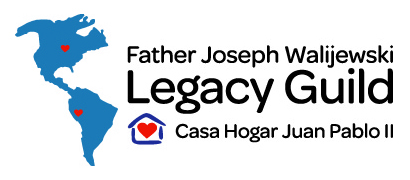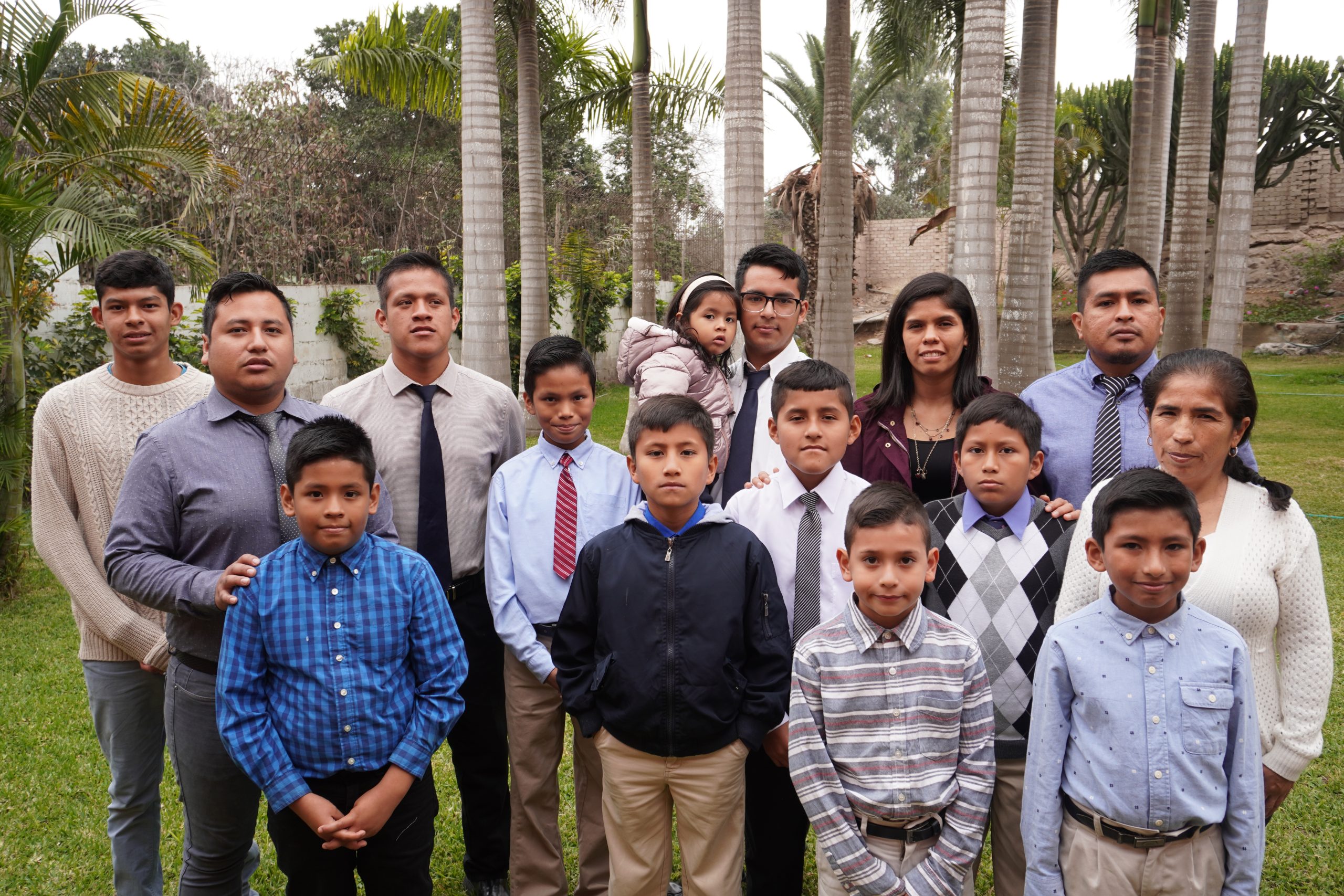A CHILD’S JOURNEY
What is an Orphan?
When discussing the children, the first questions asked are how and why the children have come to live at Casa Hogar. First, it’s important to note that the majority of our children are not true orphans as an orphan is understood to be. Orphanages in Peru are similar to the foster care system in the United States as there is no such system in Peru. There is also another big difference between the foster care system in Peru (orphanage) and the U.S., the children don’t stay for a short period. In most cases they live at Casa Hogar from the time they arrive until they are 17 years old.
There are many different definitions of orphans and our children each have their own story and their own struggles to overcome. Regardless of the reason they come to Casa Hogar, all of our children have faced the harsh reality of separation from their family and a past filled with trauma. Here are classifications of orphans that better illustrate the reasons why our children have come to call Casa Hogar their home:
True orphans: children whose parents are both deceased.
Relinquished orphans: children whose parents have forfeited their parental rights to the government.
Decreed orphans: children whose custody rights were taken away from their parents by law.
Social orphans: children who come from high-risk situations such as extreme poverty, single parents, no extended family, parental mental or physical illness, lack of education, lack of home.
Forced orphans: children who are sold or illegally removed from their family.
Why do they come to Casa?
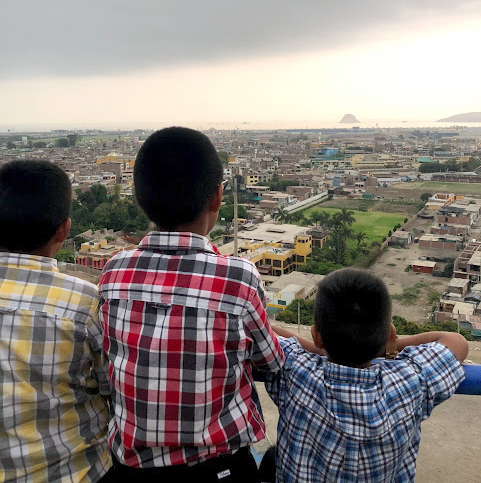
Just as there are different types or orphans there are also different ways that the needs of the child is brought to our attention. Whether the case is referred to us by police, doctors, neighbors or one of the few social workers in the community, our full-time social worker gets involved and researches the specifics of the referral. If she believes that it is best for a child to come to Casa Hogar the process will begin. The process is not simple and first requires that we go through the legal system to ensure the government approves the plan. Once we have been given the green light from the government, we start our internal admission procedure.
The internal admission process includes interviews with child and family members, when available. Next, the child will go through psychological and medical evaluations. A final report is then discussed with an admission team, and if it is determined to be a good fit for the child and Casa Hogar, a child comes to join our family.
Each of our children have their own story, but they all share the fact that they have suffered greatly in their past. Hearing the stories the children share is heartbreaking, unfathomable by most standards, and yet these young children come to us as children who need to heal.
Their Stories
Children come with many different stories and reasons for joining the Casa Hogar family, here are a few stories of our children’s lives prior to their arrival at Casa Hogar. These are all true stories of our children’s past, however small details and names have been altered to protect their privacy.
Extreme Poverty
Ariana came to live at Casa Hogar at the age of five. Abandoned by her father before she was born, lived with her young mother in extreme poverty, jumping between jobs to make ends meet. Ariana had already moved at least six times prior to coming to live at Casa and often spent time living in the street. After just a few months of living at Casa and overcoming some of her fears, Ariana has adapted well and warmed up to the family teachers. She can now usually be found smiling and often practicing to learn the prayers and songs in church…very loudly and just a bit off key.
Mental Illness
Mental illness and extreme poverty are both very prevalent problems in the city of Lima. For José, finding the next meal meant searching through the garbage for anything edible. He had been living with his mother, but she suffers from schizophrenia and was not able to provide for herself or her two children. At the age of nine, José came to live at Casa Hogar along with his older sister. Both of the children have spent most of their childhood at Casa Hogar. José enjoys living at Casa Hogar because he learns many things that he can use to have the successful future that he dreams of.
Addiction and Abuse
Esther and Maria came to live at Casa together when they were 7 and 9 years old. Their father has significant problems with drug addiction and their mother was physically and emotionally abusive. Having no steady job, she was dependent on her on again/off again live-in boyfriend who was violent with the girls. They would spend time with their grandmother but she is elderly and has terminal illnesses that make it challenging to care for the girls and provide them with the basic needs and the love and care they deserve. For several years prior to coming to Casa, they did not attend school on a regular basis and as a result both have learning disabilities. We are hopeful with some extra tutoring through our education volunteers and attention from the family teachers they will be able to thrive.
Family Illness
Miguel and Lilliana lived happily with his family until his mother fell ill with Parkinson’s disease. As his mother’s health declined, his father turned to alcohol to deal with the situation. Due to their father’s alcoholism, it was no longer safe for the children to stay with them. Miguel and Lilliana went to live with their grandmother, but she lives in a very dangerous part of town and was not able to give them the basic necessities. They have both now lived at Casa for over 6 years and are happily working toward their own future goals. Miguel wants to become a doctor!
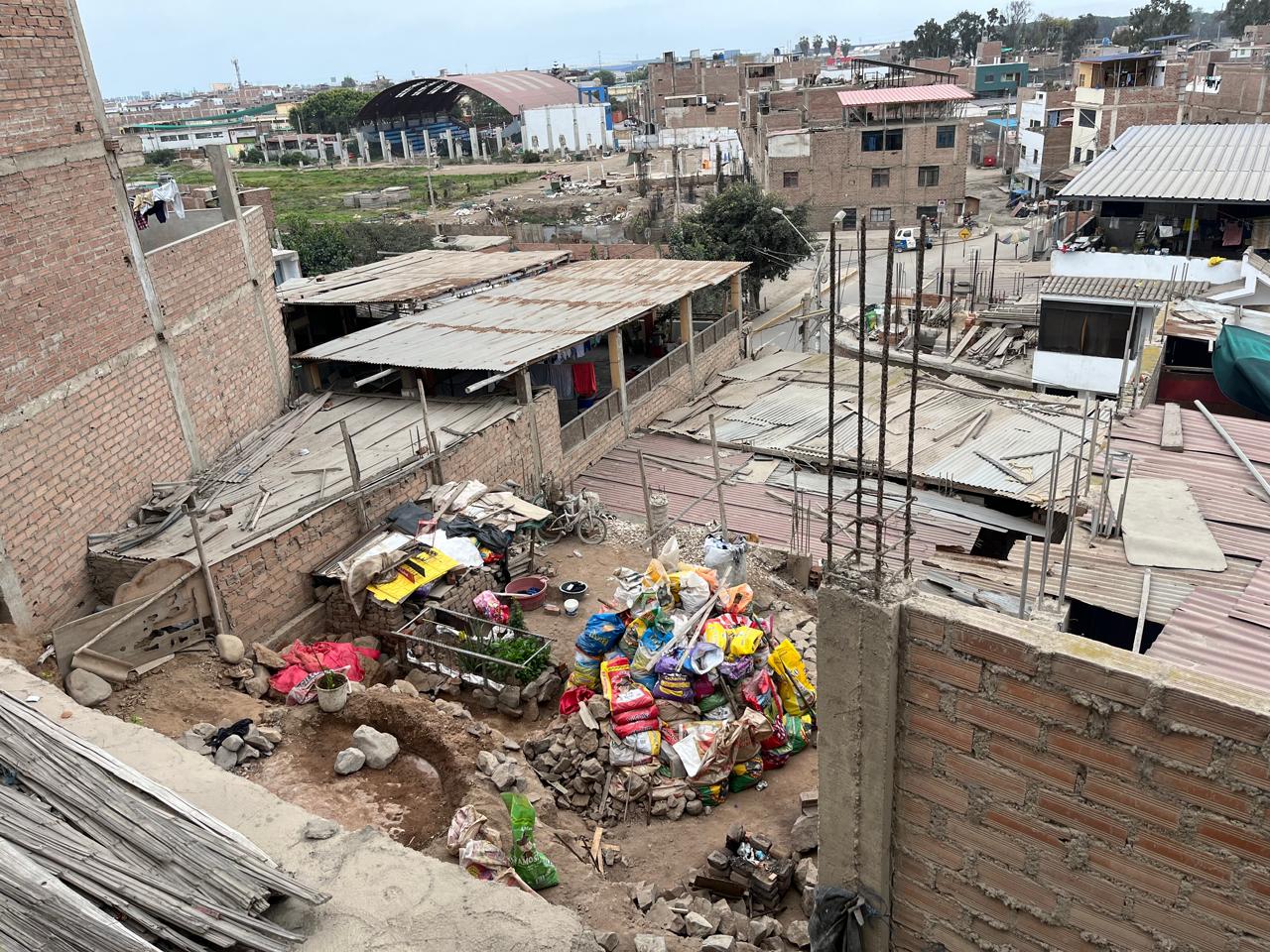
Abandonment and Incarceration
Katrina and her younger brother Andres had a difficult life before they came to live at Casa Hogar. When they were young, they lived with both of their parents, but soon after Andres was born their mother completely abandoned her kids. At the time she left, their father was in prison as an accused rapist. They went to live with their aunt; however she does not make enough money to provide for them. Her only job is selling candy on the streets, and she could not provide food for the kids. They came to live at Casa Hogar and are now happy, healthy kids.
Left All Alone
Roberto and his little brother Marco were left orphaned after their mother passed away from tuberculosis. Living in a home for terminally ill adults who were taken in off the streets, the boys were often times the only children and exposed to disease, germs and no real space to be children. After their mother passed away, the director of the home cared for the boys as best she could. They came to live at Casa and their first year was very difficult because they were not used to having rules, doing homework or playing with other children. Overtime, Marco began to develop a deep love and affection for his family teachers and adapted to the environment. He has now moved back up a grade level in school to the appropriate class for his age. Roberto struggled more, often acting out and losing control. With a great deal of attention and care, he has begun to adapt and find things that he really likes about living at Casa like music, dancing and all the healthy meals that he knows he will receive on a regular basis.
Life at Casa
In mid-2009, Casa Hogar was given the rights for the use of the Boys Town Program under their own name outside the United States. The model is comprised of five components, providing the well-needed balance for child development. They include:
-
-
-
- Teaching social, academic and independent-living skills
- Helping build healthy relationships
- Empowering youth through the development of self-government
- Fostering values and spirituality
- Living in a family life-style
-
-
At Casa Hogar we believe that all children deserve the chance for a better future. For that reason we use an integrated model of care focusing on all of the key aspects of building a healthy childhood and setting our kids on the right path for the future.
The Family Model is the key to Casa Hogar’s success. As noted above, the family-style living gives our children an environment completely different from the more traditional orphanage. In addition to the family-style living, the Family Model provides the children with a structured path to learning social skills and tracking their advancements.
In addition, helping the kids build healthy relationships is key to their success. Because of their past, so many of the kids have not experienced what a real family is like; what friendship is; what a relationship with the opposite gender should entail, etc. Abuse, poor role-modeling, TV content, and lack of morals leads little to the imagination.
Unfortunately, from years of living or witnessing the aforementioned, the kids are apt to repeat these destructive cycles. Using the Family Program, the kids are taught the differences between healthy and unhealthy relationships as well as how to detect if a relationship is heading in the wrong direction. The children learn proper boundaries in terms of their bodies, possessions and opinions, and are taught to respect these boundaries. This gives each child not only a sense of pride of who they are, but it also provides them with a sense of security and self-respect.
Another important component of our program is Empowerment Through Self-Government. Self-government is a term we use to define how one “governs” oneself; their use of self-control or self-discipline. It is an important factor to include when teaching the kids that they are ultimately responsible for what happens to them. Much self-control is learned through teaching kids skills such as how to express their feelings, to calm themselves when angry, to express their disagreement, to be tolerant of others, etc. Other ways the children learn self-government is through family meetings where they can voice their opinions on decisions being made within the family, solve problems as a group, or just by giving or receiving feedback. The concept is also taught through having the kids work together on group projects where they are held accountable as a group.
School for Children
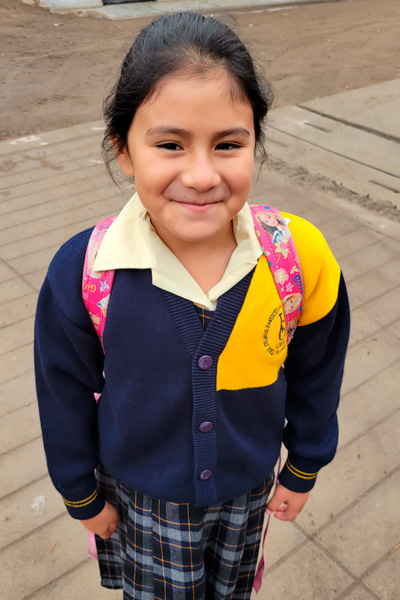
Recognizing that an education is needed to give the kids the tools for a better future, we put a great emphasis on their education. Many of our children come to Casa Hogar behind in their studies or having never attended school before because the family couldn’t afford the tuition, uniforms or school supplies, or just didn’t put a priority on the child’s education. That is changed immediately, and all of our children are enrolled in school as soon as they arrive.
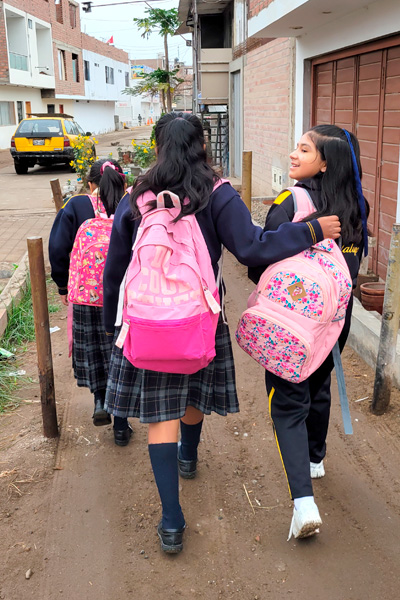
Casa Hogar does not have a school on campus, rather our children attend 5 different schools, all within walking distance. Schools vary in the schedule and length of the day with start times of 7:45 am, 12:30 pm or 6:00 pm and length between 4-7 hours, and Saturdays are sometimes part of the school week. Another difference is that the kids have very few extra curricular or after school programs available to them.
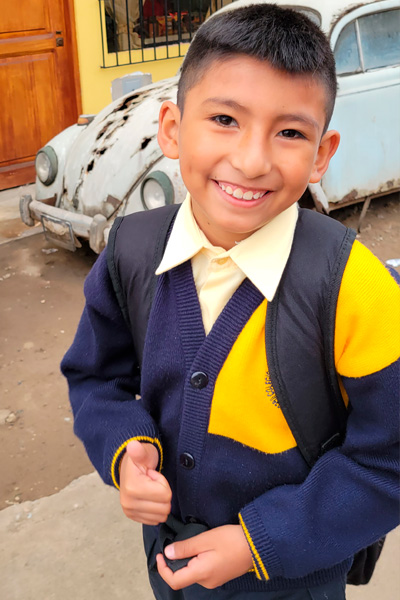
Still, our children are generally above average in their schools. This is due in great part to the effort that the parent teachers and assistants put on homework and study. Over the years we have had many “number 1 in the class” students and civic leaders. Of course, we also have children that need extra tutoring and those that could do better if they would just try. No surprise there, Casa is just like any family, only we have 64 children with 64 different attitudes that sometimes don’t listen to their parent when they are told to do their homework before they can go out and play.
After Graduation

Project of Life is a “next step” program that once again sets Casa Hogar apart from most other orphanages, not only in Peru, but also around the world. The years of formation our children receive while at Casa Hogar comes with the hope that we will also be able to guide them to use the abilities learned when they leave the orphanage.
Project of Life provides our graduates with:
- Guidance and support to finish high school if they have not by the time they age out of Casa Hogar.
- Vocational tests for our children (before and after graduation) to determine the best career path based on their abilities and interests.
- Assistance in applying for scholarships.
- Assistance in applying to technical schools and universities.
- Payment of entrance fees, tuition, and transportation to technical school.
- Continued psychological care.
- Other miscellaneous needs such as finding housing, occasional food for graduate and children, and of course, guidance with budget and adult responsibilities.
The reality is that children are not ready to set out on their own at the age of 17 or 18 in the United States, and in the world our children will be returning to, it is even harder. Father Walijewski continued to walk with graduates and their families when they left Casa, and so in his legacy, we continue that today through the Project of Life program.
A few of the 2023-2024 Project of Life program highlights are:
- Through the cooperation and financial assistance of the “Last Shall be First” foundation started by Dan and Irma O’Connor, 13 graduates are currently enrolled in institute studies, or technical school. Majors range from graphic design, IT programs, secretarial and office administration, manufacturing administration, nursing and teaching.
- Two graduates are in their 3rd year of study at the Univeristy of Lima, they are studying International Business and Engineering.
- Two graduates have received scholarships from Viterbo University in Peru. Our first student is in her 2nd year studying Social Work and with the second, in his first year is studying Computer Science.
- 15 graduates and/or their families are currently assisted with counseling and psychological services.
- Several are being assisted with employment placement and job training programs.
